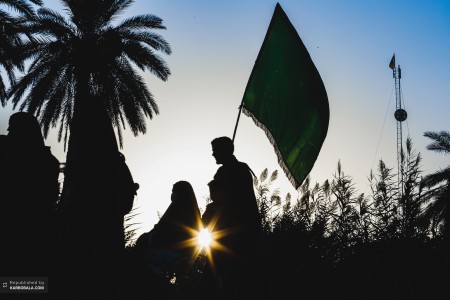
The History of Arbaeen and the walk from Najaf to Karbala

The history of Arbaeen walk is situated in early Islamic history. For Shia Muslims, the Battle of Karbala is the seminal event that inspires the Arbaeen pilgrimage in Iraq. During the reign of Umayyad Caliph Yazid, Prophet Muhammad’s (PBUH) grandson Imam Husayn (AS) was beheaded by the Umayyad army at the plains of Karbala. Forty days after the martyrdom of Imam Husayn (AS), his sister Lady Zaynab (SA) after being released from captivity by the Caliph returned to Karbala and gave a speech at the site of his martyrdom, thereby establishing the tradition of mourning and visiting the grave of Imam Husayn (AS) known as Arbaeen that occurs forty days after ‘Ashura’.
The timeline
To trace back the history of Arbaeen walk, knowing about some figures and their roles is essential:
· Jabir – The first pilgrim
Jabir ibn Abdullah al-Ansari, a companion of Prophet was the first pilgrim to visit the grave of Imam Husayn (AS) in 61 AH, after his martyrdom in the same year. His visit came at the time when Imam Zayn al-Abidin (AS) and the women of Imam Husayn’s (AS) companions were also returning from Syria after being released from prison to visit the graves of the martyrs.
· The custom during the period of Grand Ayatollah Murtadha al-Ansari
Some narrations mention that the custom of performing pilgrimage on foot existed during the period of the Shia jurist Shaykh Murtadha al-Ansari, but was forgotten some time after his death in 1864 AD.
· Revival by Mirza Husain Noori Tabarsi and other Marjas
The pilgrimage of foot was revived by Mirza Husain Noori Tabarsi during his lifetime when he performed the pilgrimage first time with thirty people including his friends and relatives. Later on, he decided to carry on this practice every year till his death. Many other Marjas, in due course followed the suit till the late 20th century.
· Prohibition by Saddam
During the rule of Saddam Hussain in Iraq, all public Arbaeen processions including the walk from Najaf to Karbala were banned for thirty years till his fall in 2003. Since 2003 the walk is held annually every year with the number of participants increasing every year.[1]
Conclusion – Connecting Past to Present
Ever since its initiation, the visit of the pilgrims to the tomb of Imam Husayn (AS) is marked by commemoration of the past by mourning the death of a pious and a just Imam while praying for the return of the Imam Mahdi (AJ), the twelfth Imam in occultation who shall arrive at the end times to fill the world with justice. Imam Husayn’s (AS) statement, “I see death as salvation, and life with the oppressors as misfortune,” is apropos here, for Shia pilgrimage is not just about the past but also about the present conditions of life.[2]
References
Pilgrimage in Islam by Sophia Rose Arjana
Shi‘i Islam: Origins, Faith & Practices by Mohammad A. Shomali
The Shia Revival: How Conflicts within Islam Will Shape the Future by Vali Nasr
https://web.archive.org/web/20151116003021/http://www.farsnews.com/newstext.php?nn=13911005001128
[1] Nasr, Vali. The Shia Revival: How Conflicts within Islam Will Shape the Future, New York: W.W. Norton & Company, 2006, p 18–19.
[2] Shomali, Mohammad A. Shi‘i Islam: Origins, Faith & Practices. London: ICAS, 2003, p. 147